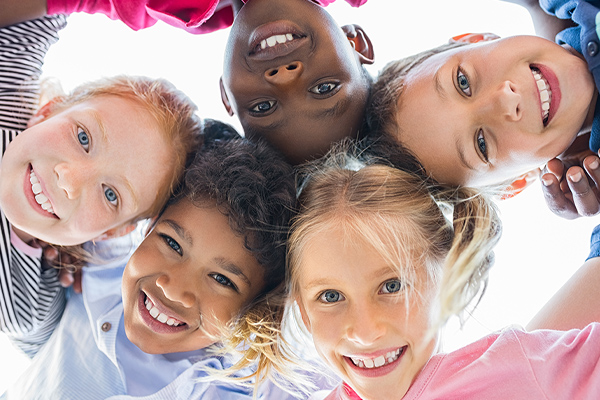SEL in the classroom
When you send your children to school, you feel assured that their academic needs will be met. They will be taught letter recognition to help them read and write, they will be taught numbers so they can do math. But, what about their social and emotional needs?
Social and emotional learning (SEL) is the process of giving children the knowledge they need to understand their emotions, develop empathy, create meaningful relationships, and make responsible decisions. Having the social and emotional needs met in school helps develop the whole child.
Theories behind SEL in the classroom
Lev Vygotsky, a 20th-century philosopher, developed a theory of child development that emphasizes the impact of social interaction and community on learning. To put it simply, children learn through social interaction. So by modeling positive social skills, responsible decision-making, and empathetic responses, our children will learn how to do those things as well. It would be much more difficult for children to learn these skills without social interaction and without the example of others (Mcleod, 2014).
Maria Montessori also developed a theory of child development that emphasizes social and emotional learning. Her approach to education is built on the idea that the whole child needs to be educated- physical, social, emotional, and cognitive. A core component of her theory is the idea of sensitive periods in early childhood. These are windows of time where learning a particular skill is at the forefront of the child’s development. Montessori education focuses on these sensitive periods and matches their curriculum to the child’s needs. This helps children learn skills when they come most naturally. This includes natural times to teach social and emotional skills. Additionally, Montessori classrooms are multi-age rooms where children interact with their peers and other children both older and younger. This allows them to learn to help those who need it, interact with those who are on the same learning plane, and model behaviors from older, more advanced students (American Montessori Society, 2017).
What does current research say about the impact of social and emotional learning?
An analysis of 30 years’ worth of SEL research showed that students who participated in SEL interventions academically outperformed those who did not have SEL interventions. Research has also found that SEL programs reduce negative behaviors at school, such as aggression, and increase positive behaviors like helping others. Additionally, a 2015 study detailed the economic impact of SEL education. The study discovered that every dollar spent on SEL education produced $11 in benefits. These benefits ranged from better lifetime earnings, reduced crime, and overall improved mental and physical health (Vega, 2017).
Benefits of SEL in the classroom
Listed below are just a few of the many benefits of meeting the social and emotional learning needs of children.
- Increased self-esteem
- Better attitude toward others
- Stronger sense of empathy
- Better commitment to school and education
- Better relationships with both peers and adults
- Less emotional stress
- Fewer behavior problems
- Better test scores
- Better attendance (Weissberg, 2016).
Long Term Outcomes
While the benefits outlined above are good, they are short-term, school-related benefits. Research has also shown that the benefits of SEL education go far beyond your child’s school years. A 2015 study showed a connection between students being taught SEL skills in kindergarten and positive lifetime benefits. Students with SEL education went on to have less criminal activity, less instances of substance abuse, better mental health, more education, and better employment. (Casel, 2017).
As you can see, the benefits of SEL curriculum and education are many. Not only does research show the importance of fostering positive learning environments and modeling social and emotional skills, but both the short and long term outcomes are many. As parents and educators, we want to do everything we can to provide a firm foundation for our little ones. Emphasizing social and emotional learning is a way we can make a big impact in their lives for years to come. We can’t assume that our children will learn these skills on their own without explicit instruction. The benefits and outcomes are far too great to leave this to chance!
An SEL curriculum can be used as part of a homeschool curriculum, preschool curriculum, kindergarten curriculum to support the social and emotional learning framework.
References
American Montessori Society. (2017). Introduction to Montessori method. Retrieved from //amshq.org/Montessori-Education/Introduction-to-Montessori.
Casel. (2017). SEL impact. Retrieved from //www.casel.org/impact/.
McLeod, S. (2014). Lev Vygotsky. Retrieved from //www.simplypsychology.org/vygotsky.html.
Vega, V. (2017). Social and emotional learning research review. Retrieved from //www.edutopia.org/sel-research-learning-outcomes.
Weissberg, R., Durlak, J., Domitrovich, C. & Gullotta, T. (2016). Why social and emotional learning is essential for students. Retrieved from //www.edutopia.org/blog/why-sel-essential-for-students-weissberg-durlak-domitrovich-gullotta.
Bring Big World of Little Dude into your classroom with our SEL humanKIND Curriculum, click here to find out more.
